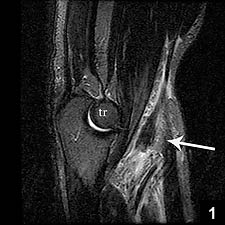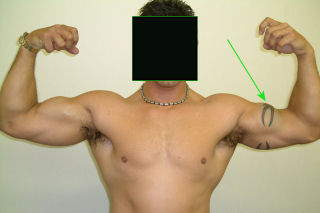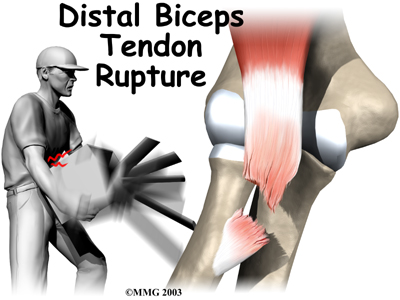Tears of the distal biceps tendon (the site where the biceps attaches to the radius in the forearm) are most common in men age 40-60, but can happen in younger patients who lift weights.

Distal Biceps Tendon Tear as seen on MRI
Usually a tear occurs after a single traumatic event, such as flexing the biceps muscle against a heavy resistance; but sometimes, tears can occur after a history of problems in the distal aspect of the tendon, such as tendonitis. Partial tears occur as well, and can generally be treated nonoperatively with good results. Full thickness tears, on the other hand, require surgical repair to achieve optimal results.

Weightlifter with Distal Biceps Tendon Tear
A tear of the distal biceps tendon can decrease elbow flexion strength by 20% and supination strength (the ability to turn your palm towards the ceiling, as in tightening a screw) by almost 50%. For best results, these injuries should be addressed as soon as possible, ideally within the first week or so after the tear. Early surgical repair can achieve strength comparable to the uninjured arm, while delaying surgery can decrease the results and may require more complex reconstructive operations. Dr. Walker will help you with the decision making process.

Distal Biceps Tendon Rupture Diagram


